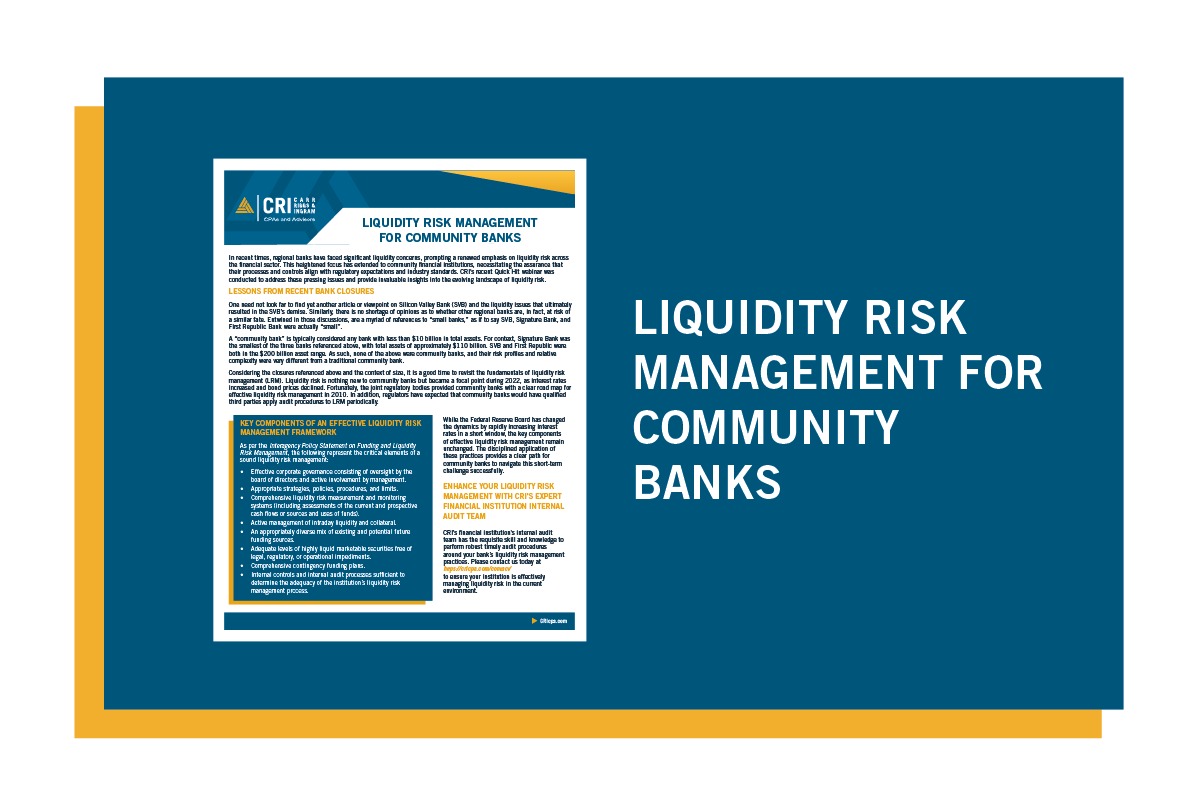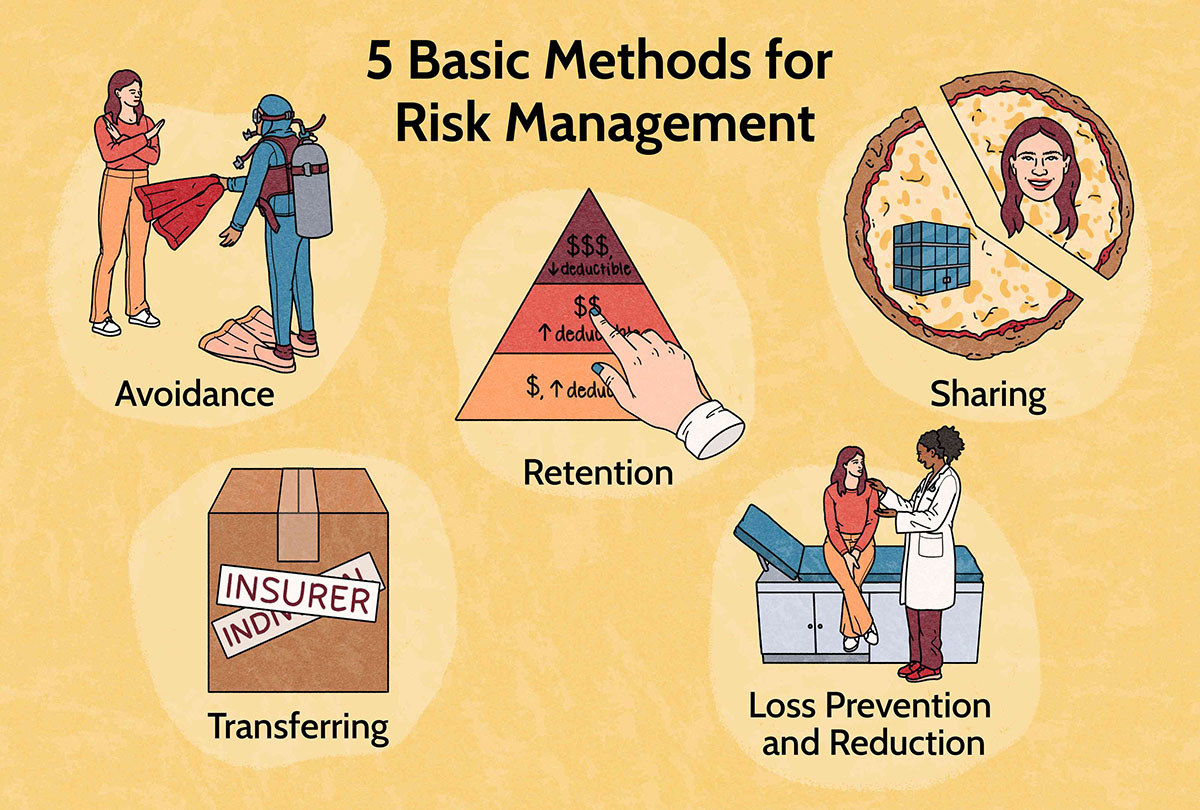

Finance
How Do Banks Manage Liquidity Risk?
Published: February 23, 2024
Learn how banks manage liquidity risk in the finance industry. Explore strategies and tools used to maintain financial stability and meet regulatory requirements.
(Many of the links in this article redirect to a specific reviewed product. Your purchase of these products through affiliate links helps to generate commission for LiveWell, at no extra cost. Learn more)
Table of Contents
Introduction
Welcome to the world of banking, where the management of liquidity risk plays a crucial role in ensuring the stability and sustainability of financial institutions. Liquidity risk, a fundamental aspect of banking operations, refers to the potential of not being able to meet the financial obligations as they come due without incurring unacceptable losses. In simpler terms, it’s about having enough cash and other liquid assets on hand to meet the day-to-day demands of depositors and borrowers.
Understanding how banks manage liquidity risk is essential for both industry professionals and the general public. It provides insight into the measures and strategies employed by banks to maintain a healthy balance between assets and liabilities, thereby safeguarding their financial well-being.
In this article, we will delve into the intricacies of liquidity risk management within the banking sector. From comprehending the nature of liquidity risk to exploring the methods used for its measurement, monitoring, and mitigation, we will unravel the multifaceted strategies that banks employ to navigate this critical aspect of their operations. So, let’s embark on this insightful journey into the world of liquidity risk management in banking.
Understanding Liquidity Risk
Liquidity risk is the potential that a bank may not have enough cash or liquid assets to meet its short-term financial commitments. This risk arises from a mismatch between the timing of cash outflows to depositors and other creditors and the timing of cash inflows from loan repayments and other sources. In essence, it’s a balancing act between ensuring there’s enough cash on hand to cover withdrawals and funding requirements while also maximizing the return on assets.
There are two primary components of liquidity risk: funding liquidity risk and market liquidity risk. Funding liquidity risk relates to the inability to meet obligations as they come due, while market liquidity risk pertains to the inability to execute transactions at a reasonable price and time. Both components pose significant challenges to a bank’s financial stability and operational efficiency.
Banks face liquidity risk due to various factors, including unexpected deposit withdrawals, changes in market conditions, and the inability to sell assets quickly without significant loss. Moreover, regulatory requirements and stress events can further exacerbate liquidity risk, making it a complex and dynamic challenge for banks to navigate.
Understanding liquidity risk is paramount for banks, as it directly impacts their ability to function effectively and maintain the confidence of depositors and investors. By comprehending the nuances of liquidity risk, banks can implement proactive measures to mitigate potential disruptions and uphold their financial resilience.
Measurement and Monitoring of Liquidity Risk
Effectively measuring and monitoring liquidity risk is essential for banks to proactively identify potential vulnerabilities and maintain adequate liquidity buffers. One of the key metrics used in assessing liquidity risk is the liquidity coverage ratio (LCR), which compares a bank’s high-quality liquid assets to its net cash outflows over a 30-day stress period. This ratio provides insight into a bank’s ability to withstand short-term liquidity disruptions.
Another critical metric is the net stable funding ratio (NSFR), which evaluates the long-term stability of a bank’s funding profile by comparing the amount of available stable funding to the required stable funding over a one-year horizon. By monitoring these ratios, banks can gauge their liquidity risk exposure and take preemptive actions to address any potential shortfalls.
Furthermore, stress testing plays a pivotal role in assessing liquidity risk by simulating adverse scenarios to evaluate the impact on a bank’s liquidity position. Through stress testing, banks can identify potential liquidity strains under adverse conditions and refine their contingency plans accordingly.
Continuous monitoring of funding sources, cash flow projections, and market liquidity conditions is integral to effectively managing liquidity risk. Banks utilize sophisticated liquidity risk management systems that provide real-time monitoring and reporting capabilities, enabling them to promptly identify emerging liquidity challenges and take timely remedial actions.
Moreover, regulatory authorities impose stringent requirements for liquidity risk management and reporting, mandating banks to maintain adequate liquidity buffers and adhere to specified liquidity risk management standards. Compliance with these regulations necessitates robust measurement and monitoring practices to ensure adherence to prescribed liquidity risk management guidelines.
Overall, the measurement and monitoring of liquidity risk are intricate processes that demand a comprehensive understanding of liquidity metrics, stress testing methodologies, and real-time monitoring capabilities. By embracing a proactive approach to liquidity risk measurement and monitoring, banks can enhance their resilience to liquidity shocks and uphold the stability of their operations.
Managing Liquidity Risk
Managing liquidity risk is a multifaceted endeavor that encompasses a range of strategies and practices aimed at maintaining sufficient liquidity to meet funding needs under normal and stressed conditions. One of the primary approaches to managing liquidity risk is maintaining a well-diversified funding base, which involves sourcing funds from a variety of stable and reliable channels to reduce dependence on volatile short-term funding sources.
Furthermore, banks employ liquidity risk limits and controls to govern their liquidity risk-taking activities, ensuring that they operate within predefined liquidity risk tolerance levels. Establishing robust liquidity risk limits enables banks to prudently manage their liquidity positions and avoid excessive exposure to liquidity risk.
Liquidity contingency planning is integral to managing liquidity risk effectively. Banks develop comprehensive contingency funding plans (CFPs) that outline strategies for addressing potential liquidity shortfalls in adverse scenarios. These plans encompass diversified funding sources, collateral management, and potential access to central bank facilities, providing a structured framework for responding to liquidity disruptions.
Asset-liability management (ALM) plays a pivotal role in liquidity risk management, enabling banks to align the maturity and cash flow profiles of their assets and liabilities to mitigate liquidity mismatches. By proactively managing the repricing and rollover risks associated with their balance sheet, banks can enhance their resilience to liquidity fluctuations.
Central bank facilities and standing liquidity facilities serve as crucial backstops for managing liquidity risk. Banks can access central bank lending facilities to obtain emergency funding during periods of acute liquidity stress, bolstering their ability to meet short-term funding needs and maintain financial stability.
Moreover, maintaining a robust liquidity risk governance framework is paramount for effective liquidity risk management. Banks establish dedicated liquidity risk management committees and frameworks that oversee and steer liquidity risk management strategies, ensuring alignment with the institution’s risk appetite and regulatory requirements.
By integrating these strategies and practices, banks can prudently manage liquidity risk, fortify their resilience to liquidity shocks, and uphold the stability and continuity of their operations.
Conclusion
In conclusion, the effective management of liquidity risk is a cornerstone of sound banking practices, vital for safeguarding financial stability and maintaining the confidence of stakeholders. Liquidity risk, comprising funding liquidity risk and market liquidity risk, presents dynamic challenges for banks, necessitating robust measures and strategies to mitigate potential disruptions.
By comprehensively understanding liquidity risk, banks can proactively assess their liquidity positions, identify vulnerabilities, and implement prudent measures to maintain adequate liquidity buffers. The measurement and monitoring of liquidity risk, encompassing metrics such as the liquidity coverage ratio and stress testing, provide banks with valuable insights into their liquidity risk exposure, enabling them to take preemptive actions to address potential shortfalls.
Managing liquidity risk entails a holistic approach, involving diversified funding sources, liquidity risk limits, contingency funding plans, asset-liability management, and robust liquidity risk governance frameworks. These strategies collectively fortify banks’ resilience to liquidity shocks and enhance their capacity to navigate challenging market conditions.
As regulatory requirements continue to evolve, banks are compelled to uphold stringent liquidity risk management standards, further underscoring the significance of effective liquidity risk management practices. Compliance with regulatory guidelines necessitates a proactive and adaptive approach to liquidity risk management, ensuring that banks operate within prescribed liquidity risk tolerance levels and maintain adequate liquidity buffers.
Ultimately, the prudent management of liquidity risk is indispensable for fostering financial resilience, preserving the stability of banking institutions, and upholding the trust and confidence of depositors, investors, and regulatory authorities. By embracing a proactive and comprehensive approach to liquidity risk management, banks can navigate the complexities of liquidity risk while sustaining their operational continuity and long-term viability.














